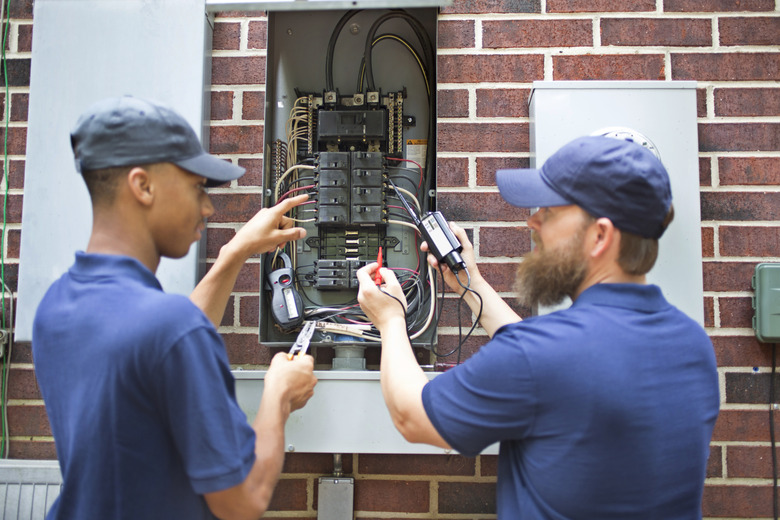House Wiring Definition
House wiring consists of an electrical wiring system that distributes energy to be used in equipment and appliances around the house. It also involves the proper installation and operation of the electrical outlets, switches, breakers, meter base and different electrical circuits.
How to Wire a House
How to Wire a House
The most important requirement for any electrical wiring system is safety. Before attempting to wire your house, you must have a solid understanding of the regulations and safety standards to prevent mistakes that might cause shocks, injuries, damage or fire. Most states don't allow unlicensed electricians to work on the wiring, so you need to check the National Electrical Code in your area before beginning a project.
You'll need a proper electrical wiring diagram to carefully plan out where the wires go with the number of outlets and home switchboard panels in each room in your house. You also have to include the spot for the circuit breaker in your diagram. Once your plans have been approved, you can begin setting up the outlets, switches and breaker with the correct amperage on the walls.
It's generally safer to install many outlets within one room than use extension cords later on. When these are in place, it's time to roll the wires from the breaker box into the outlets, according to the plan in your diagram. Be sure to carefully follow the instructions on the breaker box when you set the wires, outlet, switch and fixtures. Lastly, install the circuits that match the required amperage for the wires.
What Is a Domestic Electrical Wiring System?
What Is a Domestic Electrical Wiring System?
The voltage of a domestic wiring system depends on the types of appliances used in the house. There are different methods for creating the domestic electric circuit, but the universally acceptable, efficient and economical system is the loop-in system.
What Color Wires are Positive and Negative?
What Color Wires are Positive and Negative?
Basic colors for positive and negative wires for DC power are red (positive), black (negative) and white or gray (negative). The colors of the wires for AC power, on the other hand, depend on the volts the wires carry in its multiple phases. In most houses, the first phase of the household wiring system is black, while the second and third phases are red and blue, respectively. The ground wiring, however, is green or green with a yellow stripe, while the neutral wiring is gray.
Can You Get a Shock From the Neutral Wire?
Can You Get a Shock From the Neutral Wire?
Ideally, you shouldn't get a shock from neutral wires, but it can happen if the electrical system hasn't been correctly set up and you're in between the grounded source and the neutral path. Similarly, hot and neutral wires can be interchangeable in some appliances. To prevent an accident, always turn off the main circuit when you're working on electrical wirings.
